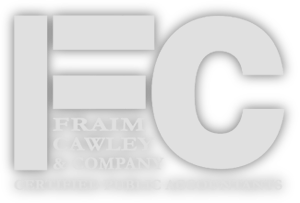“He was able to turn out thousands of paintings over his lifetime while his contemporaries were lucky to turn out a hundred” – Mike Michalowicz discussing Sir Peter Lely
A while back I was talking with a friend and client (Mitch Wilder) about how I’ve been feeling increasingly underwater lately. The firm has continued to grow, but I’m working fewer hours than I used to before our daughter was born. (Don’t get me wrong – I still work plenty of hours; just not the insane schedule I kept before.)
It used to be that if something needed to be done, I would just work longer. Weekends? Okay. Another late night? No problem. That’s no longer an option that I will accept – since I love spending time with my kid and am making that a priority. And while we have hired new staff to keep up with demand, we’ve found that matters which require my personal attention – things I believe that only I can do or that I choose to solely undertake – can still get held up. Essentially, in many cases, I am the bottleneck now.
To be clear: none of this is at all unique to me. This is something the majority of parents go through – and many of them with more children than me. And it is also a common experience for virtually all business owners – those with kids or not. The person at the top still ends up trying to handle all sorts of duties and the growth of the company makes it unfeasible for him or her to do that expeditiously. So yeah, it’s not a situation unique to me, but it has still been a challenge at times and is something we’ve been having to navigate.
One of the main areas where this has become an issue is responding to client questions over email. I could truly, literally, do nothing all day but answer emails if we allowed that to continue unchecked. My solution to this was to try to remove emails from the equation, if not entirely, at least to a large degree.
We have tackled this in a couple of ways. For the past several years, all of our new business clients are on a service package. These packages include scheduled quarterly consultations wherein we discuss strategies regarding taxes, business planning, business development, and so forth. While we don’t refuse email questions, we encourage these clients to save up non-urgent questions for their quarterly meetings – so that they’re all considered as part of the bigger picture strategy, and since that is where the majority of the planning work takes place.
Secondly, for our clients who are not on the inclusive service packages mentioned above, we find ourselves needing to remind them that they need to book an appointment if they want to discuss something. As we’ve continued to grow, we are no longer in a position to answer numerous email or phone inquiries and provide consultation unless we schedule an in-person or phone meeting.
From the standpoint of our practice management and to provide the quality of care that the clients of our firm deserve, both of these tweaks to our work processes have merit and have helped – and are practices that we continue to implement. But even at that, they do not completely address the need to run a business efficiently and effectively – whether that business is my CPA firm or some entirely different sort of business with its own unique services, customer base, and challenges.
Mitch asked why I didn’t just systemize things so that someone else could answer the questions. He suggested creating flowcharts, FAQs, and other documentation that would give other members of the team the ability to answer the questions instead of so many of these questions flowing upstream to me.
Initially I balked, because the answers to the questions that are posed will often vary considerably depending on the situation of the person asking it. The correct guidance for one taxpayer or business owner would be absolutely wrong for another. Their age, overall income, amount of income from different categories, the industry they work in, assets and investment strategy, etc. – there are a million different variables that can come into play. And those specifics will largely determine the correct answer for that person’s situation.
In short: my position was that when a question is posed to me, it’s rarely a question that has a uniform answer across all (or even most) taxpayers. So it’s usually not just something I can easily create an FAQ for and then just send off to the team.
Mitch (rightfully) challenged me on that mindset. He suggested that whenever we get questions, we should then identify all of the different variables that go into the answer. And once you strip it down to those components, there will be a lot more commonality than you realize. Certain variables will pop up more frequently than others, certain archetypes will present themselves, you will often be able to place the client’s situation into one of a few categories, etc. And thus, while you/I might not be able to get every client all of the way resolved using this method, you’ll be able to get the majority of them a lot further along than you might initially realize. And his advice reminded me of the example mentioned at the outset.
Sir Peter Lely was a German painter from the seventeenth century. His work was popular to the point that there was no way he could meet the demand on his own – regardless of how many extra hours he worked.
So what did he do? In his book Clockwork, Mike Michalowicz explains:
“His work in high demand, Lely opened a workshop and trained other painters to help him complete his paintings. This fella didn’t just have a few assistants; he had a massive operation that allowed him to do what he was known for, what he did best: paint faces, leaving the rest of the portrait to his assistants. When customers wanted some of that “Windsor Beauty” magic, it was all about the face. But if Lely painted every portrait in its entirety, including the subject’s attire and surroundings, he would be spending the majority of his time working outside of his zone of genius, i.e., capturing faces.
The next time you dare to say ‘my business can’t be streamlined’ or ‘I need to do all the work’, take a pause. You are lying to yourself. Your business can run on its own. If an old-school painter can do it, you surely can, too.”
And because of that approach, Lely was able to produce thousands of paintings instead of perhaps one hundred.
I think about that lesson all of the time – the fact that no business is so unique that it cannot be partially systemized. But even then, I often still find myself falling into that same trap of acting like mine is. “Taxes are complicated and everyone’s situation is unique. There’s no way anyone else can do this for me.”
That’s clearly nonsense. If a literal artform like painting can be in some measure delegated, so can each of our businesses.
That’s not to say that it will be easy. In our case, it’s a significant challenge to identify all of the variables that come into play for each question. And clearly for some questions, the matter will still require my personal involvement. And I wouldn’t have that any other way. I love using my expertise to personally engage with and solve problems for clients.
But if each of us can get our teams 80% of the way there, that’s a pretty massive win. Clients will be happier as they are cared for promptly and efficiently, our teams will feel more empowered and be more productive, and our time will be freed up to do the creative and expert work that we really need to do.
As always, we need to take an honest look at ourselves and our businesses. “Knowing” we are right and that there is nothing different we can do can feel perversely comforting, but it’s a false comfort. Fixing the flaws in ourselves and our business methods are the only ways to truly reduce our stress and increase our productivity – thus giving our clients the highest quality service.
Any accounting, business, or tax advice contained in this communication, including attachments and enclosures, is not intended as a thorough, in-depth analysis of specific issues, nor a substitute for a formal opinion, nor is it sufficient to avoid tax-related penalties.




